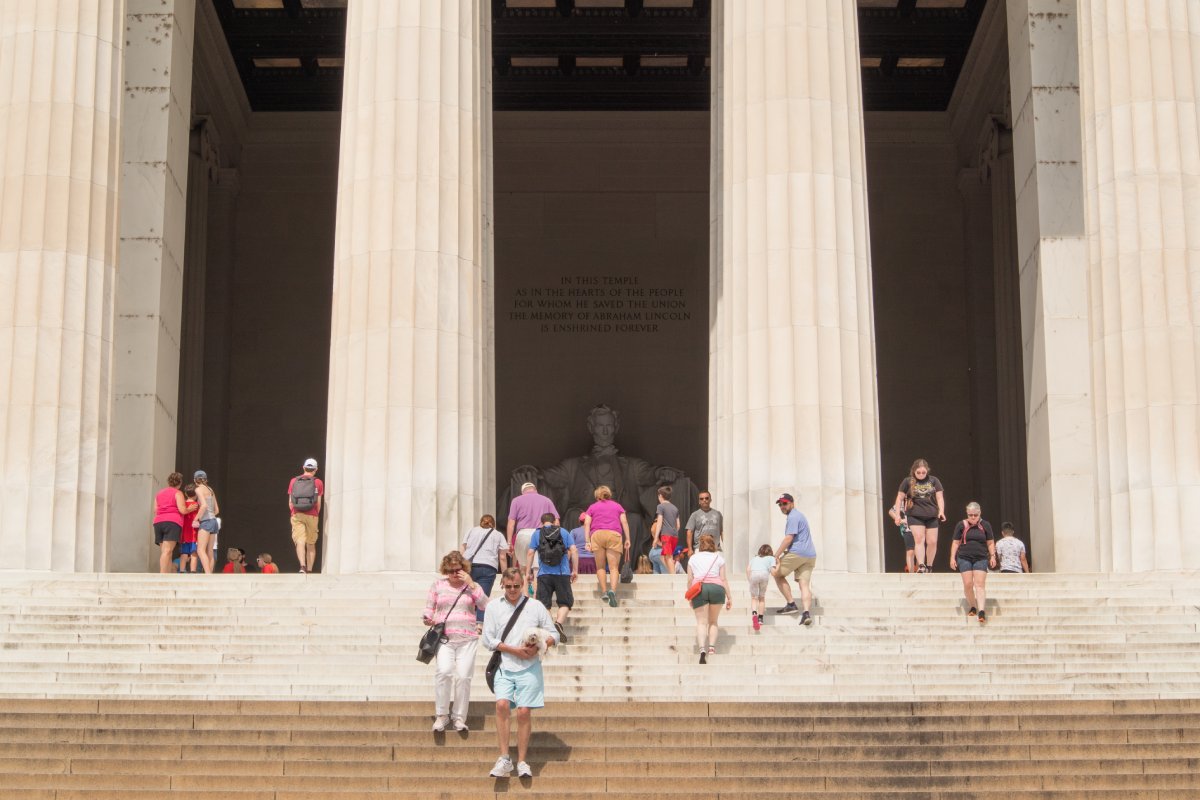Skift Take
If the U.S. can't get Chinese tourists back, it will have to up its game attracting tourists from other international markets to make up for the spending shortfall.
International travel to the U.S. has not returned to its 2019 peak, though some markets are doing better than others. Germany, for example, likely needs another year to recover, while India should exceed it this year, said Brand USA President and CEO Chris Thompson. None of that, however, will be enough to make up for the loss of China.
Thompson spoke with Skift at the Destinations International Annual Conference about why the U.S.’s travel industry can’t make a full recovery without China, what Brand USA is doing with $250 million in federal relief funds help to jumpstart international tourism, and how the U.S. can stay globally competitive as destinations in Asia improve their tourist infrastructure and marketing.
Skift spoke with several CEOs of the destination marketing organizations from top U.S. tourist destinations. Among the top issues:
- Securing the 2026 FIFA World Cup final game.
- The damage visa delays do to international marketing.
- Replacing the loss of Chinese tourist spending.
- Where they are investing their federal Covid relief funds.
- Supporting return-to-office policies to revitalize downtowns and more.
Below are excerpts from Skift’s interview with Thompson:
The Missing Chinese Tourist Problem
Skift: How’s international travel to the U.S. doing compared to 2019 levels?
Thompson: As far as our return to 2019 numbers, certain markets are really strong and coming back. So by the end of this year, I think Canada and India will be beyond 2019 levels. Germany and France probably have the next best chance in 2024 to get back to pre-2019 levels. Japan and South Korea are probably going to be the last to come back.
Tourism Economics, which is I guess the respected forecaster for our space right now, they’re still saying 2026 [for a full international recovery]. I think it’s going to be sooner than that, but it’s really mostly due Asia.
Skift: One point you made very clear at your testimony in front of the Senate subcommittee in June was that there would be no real travel recovery for the United States without China.
Thompson: There won’t be a post-Covid recovery without China because it’s our number one spend market. $35 billion is what it was in 2019.
So 2019 we had nearly 80 million visitors that spent about $235 billion. 3 million Chinese spent $35 billion.
Nearly 3 million Chinese spent more than 20 million Canadians. Nearly 3 million Chinese spent more than 20 million Mexican visitors.
[This year, 849,000 Chinese are forecasted to come to the U.S., according to the National Travel and Tourism Office.]
Skift: Why haven’t they returned to the U.S. at their pre-pandemic level?
Thompson: It’s never been a demand issue. Pretty much they’ve been prevented from traveling. So they still are not allowing group travel to the U.S. So packaged group travel is not coming out of China. It’s just a government decision, and it’s geopolitical.
I think air service out of China is probably still 10% of what it was pre-Covid.
Some of our industry partners, when I was in Asia, were saying that they’re not sure that we’ll ever see in the nearest future what China was pre-Covid.
Skift: I imagine their weak return is hurting destinations on the West Coast a lot.
Thompson: The western gateways get the majority of the Chinese markets – LA all the way up into Oregon and Washington. They’re the ones that probably are suffering the most from the China market not coming back. New York gets a decent share of that too. So any market that had a significant number of Chinese visitors right now, they’d be hard-pressed to find a way to recover that market as far as overall spend.
Spending $250 million to Support International Tourism Marketing
Skift: Last year, Brand USA got a massive $250 million relief investment from the federal government.
Thompson: In a normal year, our budget’s around $150 million. Over Covid, when people weren’t traveling, they weren’t registering, so we were getting no ESTA fees. And so our funding source kind of came to a halt. It had gotten down to where there was, in the worst year, only $13 million in our fund and then the next year was $62 million.
So we went to our media buying company partners. We went to all our partners and said, “Okay, forget about what we have had in the past. What do we think we need to be resourced to be able to come out of Covid?” Knowing that it was going to be a multi-year return. It’s not going to be something coming out of it right away in the first year. And so that’s where the $250 million number came up. And they took our proposal, was sitting on Gina Raimondo’s desk as the new Secretary of Commerce on her first day. She liked it. She adopted it. It was taken to the Hill.
And then the advocacy army that we have that supports us, whether it’s the U.S. Travel Association and all the verticals tied to the individual sectors, started lobbying for it. Then they gave us $250 million for that. And they made us match $50 million of it. And then $200 million of it was free and clear, meaning we didn’t have to match it.

Skift: How have you used it to support the recovery?
Thompson: The campaign we just launched is the largest single consumer campaign we’ve ever launched in our history: “This Is Where It’s At.” We would not have been able to do that in the absence of that additional resource.
That put us in a position to have resource to come out of Covid so that when we felt like the market was ready, that we would be able to then get back to doing what we do. So we’re now active.
The campaign we just launched is in 10 of our 11 markets, doesn’t include China. And then we’re now back active in, we have global representation around the world. We’re calling on the travel trade there that are packaging travel, calling on the travel media that are helping us tell our story and reigniting those relationships and helping to spur a return to travel in ways that we can do that. So that was really successful.
Asian Destinations Became Competitive
Skift: One common thing I’ve heard from international tour operators and industry leaders is that U.S. international competitiveness has been sliding over the past few decades since the rise in intra-Asia travel.
Thompson: Well, I think most of the developed world has now discovered the benefits of travel and tourism, certainly economic, which is the reason why you do it. One of the things we were talking about pre-Covid is travel and tourism is an export. Most people don’t view it that way. So it’s a service export, meaning the product is the experience. And people have the memories they take back and the money they leave behind.
So nearly 10%, 9 or 10% of everything, the largest economy in the world exports is tied to what we do in partnership with the federal government, which is to maintain or grow international travel as an export. And so the rest of the world has figured that out too. And so all developed countries now realize that not only does it make good monetary economic sense as far as driving the economy, but it just makes diplomatic sense.
And then you look what’s happening in Saudi Arabia. Saudis, in particular, they’re here at this event. They’ve realized that they have to reinvent themselves with everything going on about oil and just all of those issues. They’re spending a lot of money that there had not been spent prior to get very competitive really quickly. They have obviously great proximity to our Asian markets and to our European markets so they’re a huge competitor overnight.
Now we compete with markets in close proximity to Europe for European business. European business tends to be East Coast centric. Asia business tends to be West Coast centric. And my colleagues around the world will say, “Chris, you know, I can have any experience you can have in the U.S. elsewhere in the world.” Then I said, “All right, I have to give you that, but you can only have the USA version of the experience here.”
And that’s what makes it different. So the way our pop culture influences the experience that you could have here that may be similar to somewhere else in the world, the only delivery of the USA experience is here. And that is the aspirational nature of the U.S. is just if they’ve never been, they’ve studied it in history and in school. And then they’ve otherwise, I’ve always said that before there were DMOs, the way the majority of people learned about it was through our pop culture movies and music.
The Daily Newsletter
Our daily coverage of the global travel industry. Written by editors and analysts from across Skift’s brands.
Have a confidential tip for Skift? Get in touch
Tags: brand usa, china, global tourism, international tourism, international travel
Photo credit: Lincoln Memorial. Photo Credit: Ryan Stone Ryan Stone / Unsplash

